Manotick Fall Prep: Protect Hydrangeas in Microclimates
Ready to ensure your Manotick garden thrives through winter? Request a free quote today!
Quick Guide: Protecting Manotick Hydrangeas This Fall
- Identify your hydrangea type (Bigleaf needs most protection).
- Protect after first frosts, before ground freeze (late Oct/early Nov).
- Don't prune Bigleaf stems in fall.
- Mulch the base well (3-4 inches).
- Use burlap wrap or a leaf cage for Bigleaf varieties.
- Understand local microclimates for better placement and care.
Intro: Manotick's Fall Charm & Hydrangea Heartbreak (Don't Let It Happen!)
Ah, Manotick in the fall! The leaves turn brilliant shades along the Rideau, the air gets crisp – it's pure magic. As we enjoy this cozy season in our landscaping, many of us also start thinking about our gardens, especially those gorgeous hydrangeas that bloomed so beautifully all summer. They're a staple in yards from here to Barrhaven for good reason! But then comes the *uh-oh* moment: Ottawa winters. Our notorious cold snaps and unpredictable freeze-thaw cycles can be brutal, leading to what we gardeners sadly call "hydrangea heartbreak" – when spring arrives, but the promised blooms don't.
It gets even trickier in areas like Manotick or nearby Osgoode, where unique *microclimates* mean your backyard conditions might differ slightly from the general forecast. Don't despair! This guide is your local companion for fall gardening success. We'll walk you through simple, effective steps to *protect your hydrangeas* from the coming chill, ensuring they survive the winter and return with stunning flowers next year. Let's keep the heartbreak out of your garden!
Hydrangea 101 & Why Ottawa Winters Give Them the Chills
Okay, let's dive into the wonderful world of hydrangeas and why our Ottawa winters sometimes make them want to pack their bags and head south! Understanding your specific hydrangeas is the first step to ensuring those beautiful blooms return year after year.
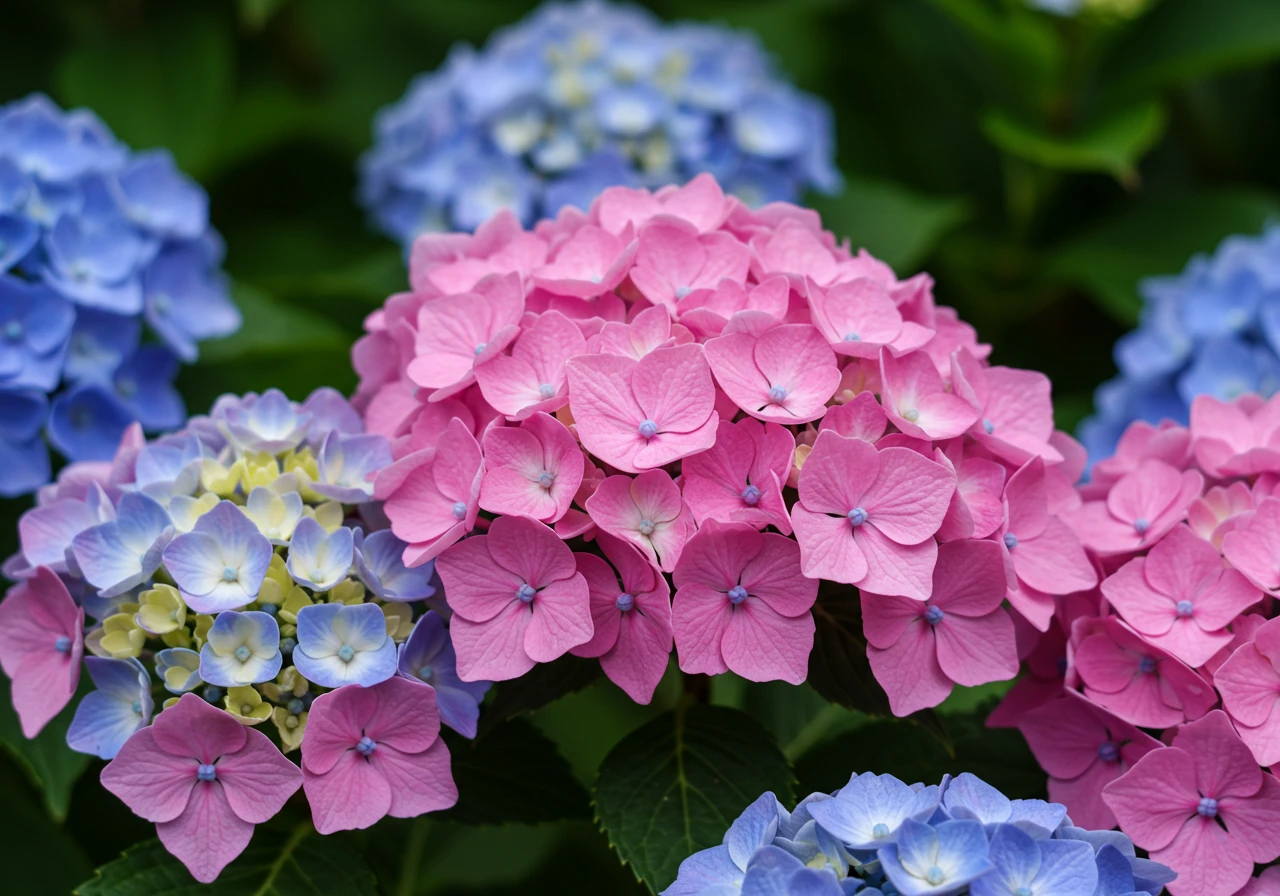
Hydrangea 101: Know Your Blooms
Not all hydrangeas are created equal, especially when it comes to surviving a chilly Ottawa winter. Here are the main types you'll likely find in gardens from Manotick to Greely:
- Panicle Hydrangeas (Hydrangea paniculata): These are the tough cookies of the hydrangea world! Think 'Limelight', 'Quick Fire', or 'Pinky Winky'. Their cone-shaped flowers appear later in the summer. *The key thing:* They bloom on *new wood* – the stems that grow in the *current* spring season. This means even if winter is harsh, the flower buds for next year haven't formed yet, so they usually bloom reliably without special protection. Hooray!
- Smooth Hydrangeas (Hydrangea arborescens): 'Annabelle' is the classic example here, with those huge, round white flower heads. Like Panicles, they also bloom on *new wood*. They are generally very hardy for our climate and usually don't need much winter fuss. They might die back to the ground in a tough winter, but they regrow and bloom the same year.
- Bigleaf Hydrangeas (Hydrangea macrophylla): Ah, the beautiful blue and pink pom-poms! These are often the ones that cause gardeners the most winter worry. Think 'Endless Summer' (though even these reblooming types aren't foolproof here). *The challenge:* Traditional Bigleaf hydrangeas bloom primarily on *old wood* – the stems that grew *last* year. This means the flower buds for next summer are formed in late summer/fall and have to survive the entire Ottawa winter.
Why Ottawa Winters Give Hydrangeas the Chills
Our Nation's Capital might be beautiful, but its winters are not always kind to garden plants, especially those borderline hardy ones like Bigleaf Hydrangeas. Here's the lowdown:
- Hardiness Zone Blues: Ottawa sits mainly in Plant Hardiness Zone 5a or 5b. Bigleaf hydrangeas are often rated for Zone 5 *at best*, meaning they're right on the edge of their survival tolerance. A particularly harsh winter can easily damage or kill those precious buds.
- Freeze-Thaw Cycles: This is a big one! Ottawa winters rarely stay consistently frozen. We get thaws followed by deep freezes. This fluctuating temperature confuses plants and can damage buds that start to swell slightly during a warm spell, only to be zapped by the next cold snap. Keep an eye on the Ottawa forecast!
- Wicked Wind: Winter winds whip across open areas, drying out stems and buds (a process called desiccation). Even if the temperature isn't technically low enough to kill the buds, the wind chill can finish the job.
- Snow: Friend or Foe? A consistent, deep snow cover can act like insulation, protecting the base of the plants and the lower buds. However, heavy, wet snow can break stems, and lack of snow cover leaves buds exposed to the cold and wind.
- Soil Matters: Our local soils, often containing heavy clay like you find in parts of Manotick, can hold a lot of moisture. Poor drainage means roots might sit in cold, wet conditions all winter, stressing the plant. Improving drainage is key; learn more about managing clay soil drainage. Ensuring plants are healthy going into winter, supported by good summer practices like proper watering techniques, also helps them withstand stress.
The Bottom Line: Protection is Often Necessary
Because Bigleaf Hydrangeas set their buds on old wood, those buds are vulnerable throughout our long, cold, and unpredictable winters. Without protection, you might get lovely green leaves in the spring, but few or no flowers. That's why taking preventative steps in the fall is crucial for these specific types. It’s an important part of your overall fall gardening strategy, along with tasks like raking leaves and general tidiness covered in a comprehensive fall cleanup.
Think of fall protection as tucking your sensitive hydrangeas into bed for the winter. Getting this right is detailed in our detailed winter prep guide. If tackling the full list of fall chores feels like too much, remember that professional landscaping services are available, including specialized help like a Manotick yard cleanup service to get your garden ready for the cold.
Understanding which hydrangea you have is the absolute key to knowing how much winter prep they need!
Decoding Your Backyard: Microclimates in Manotick and Beyond
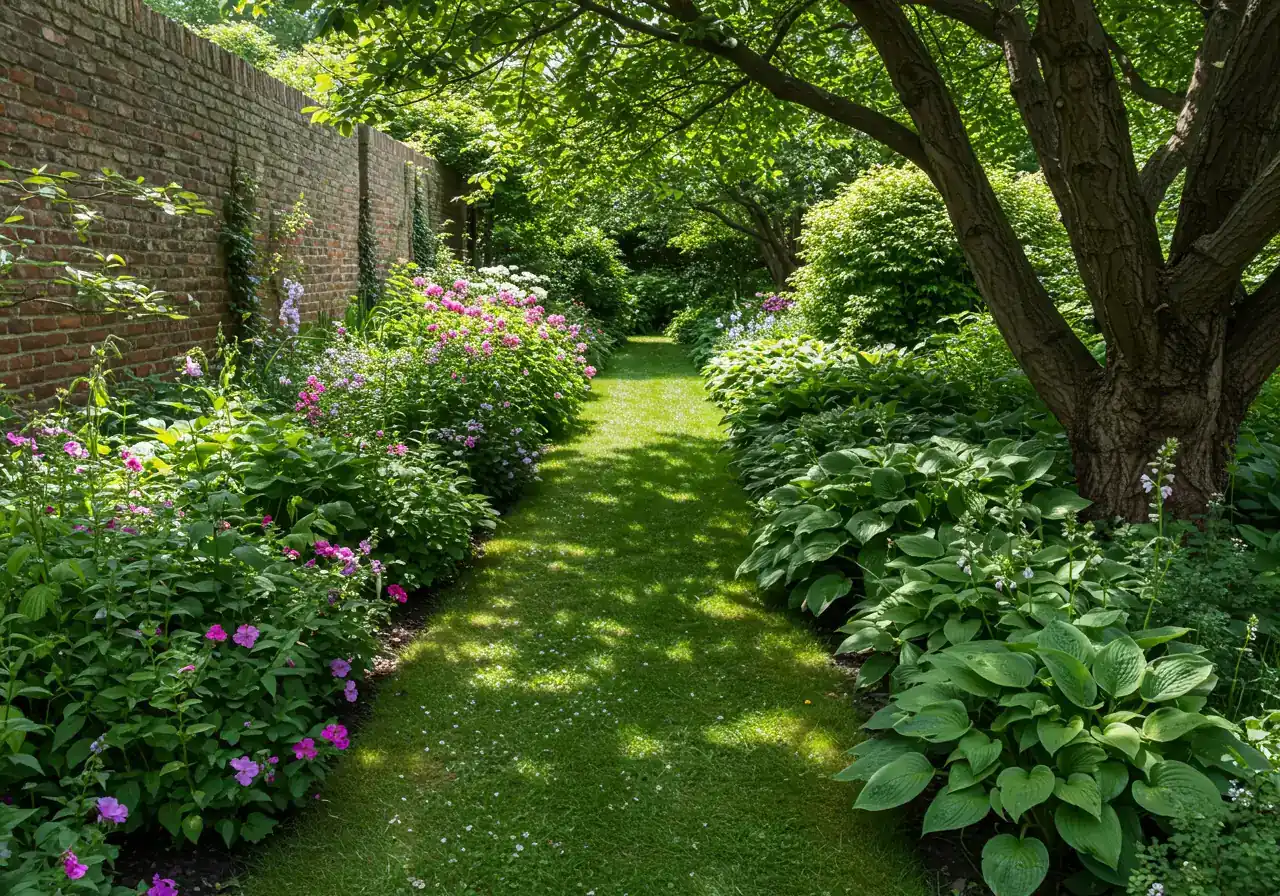
Ever noticed how the snow melts faster in one corner of your yard, or how plants thrive in one spot but sulk just a few feet away? Welcome to the fascinating world of microclimates! Think of your yard not as one uniform space, but as a collection of tiny neighbourhoods, each with its own mini-weather system. Understanding these zones is like having a secret decoder ring for successful gardening and landscaping, especially in the diverse settings around Ottawa.
So, what creates these mini-climate quirks? Several factors are playing puppet master:
- Sunshine & Shade: This is the big one. A south-facing wall bakes in the sun all day, creating a much warmer, drier zone, almost like a little desert island. Conversely, the north side of your house or the space under a dense maple tree might stay cool and damp much longer. You'll see this contrast sharply between open, sunny yards and those shaded by mature trees. For local advice, resources from the Ottawa Horticultural Society can be helpful.
- Wind: Is your yard wide open to the breezes whipping across the fields, like some properties out in Greely or Osgoode? Or is it sheltered by fences, hedges, or the house itself? Structures can create wind tunnels or surprisingly calm pockets. This affects temperature and, crucially, how quickly soil and plants dry out.
- Water & Moisture: Low spots in your lawn might collect water, creating boggy conditions. Areas near downspouts get extra drinks, while spots under wide roof overhangs can stay stubbornly dry. Living near the Rideau River in Manotick can even slightly moderate temperatures or increase humidity compared to spots further inland. Conservation authorities like the Rideau Valley Conservation Authority often have resources on local water conditions.
- Structures & Surfaces: Hard surfaces like patios, driveways, and stone retaining walls absorb heat during the day and radiate it back at night, creating warmer zones nearby. Dense subdivisions in Barrhaven or Nepean often have more of these heat-influencing surfaces close together compared to larger, more open rural lots you might find in Metcalfe or Richmond.
Become a Backyard Detective:
How do you figure out *your* yard's unique microclimates? Put on your detective hat!
- Observe: Spend time watching where the sun hits and for how long throughout the day. Notice where snow melts first in late winter or where frost lingers longest in the fall.
- Feel: Pay attention to windy spots versus sheltered areas. Does one side of the house feel noticeably colder or warmer?
- Check the Soil: After rain, see where water pools or where the ground dries out fastest. Dig down a bit – is it consistently damp or dry?
- Plant Performance: Your plants are telling you stories! Where do they thrive? Where do they struggle? This is often a direct clue about the microclimate. You can find helpful regional planting info on the Government of Canada Plant Hardiness Zones map.
Understanding these zones helps you place plants where they'll be happiest (no sun-lovers in deep shade, please!) and tailor your care. Maybe one area needs more water, while another needs protection from harsh winds. Getting this right can be the difference between a struggling garden and one that shines. It’s key knowledge for planning everything from simple planting to visualizing bigger inspiring landscape transformations. If parts of your yard seem particularly challenging due to their microclimate, getting help with tasks like leaf removal or bed preparation through an Ottawa yard cleanup service can make a big difference. Specialized care might be needed; for instance, a tricky garden spot might benefit from an Ottawa garden clean up service focused on its unique needs, while residents in rural communities could look into options like a Metcalf garden clean up service. And of course, for Manotick residents dealing with specific local conditions, the dedicated Manotick yard cleanup service is tailored to help. We hope these insights help you decode your yard – thank you for reading!
Your Step-by-Step Hydrangea Hibernation Plan
Okay, garden warriors, let's talk about tucking those beloved hydrangeas in for their long winter nap! Ensuring they survive our often-feisty Ottawa winters means taking a few protective steps in the fall, especially for those gorgeous Bigleaf varieties (the blue and pink ones) that bloom on last year's stems. Think of it as putting their winter PJs on – a little effort now means big bloom rewards next summer. Here's your plan:
Step 1: Timing is Everything (Ottawa Style!)
Start covering *after* a few light frosts but *before* the ground freezes solid (late Oct/early Nov). Monitor the forecast closely.
Step 2: Last Call for Water
Water consistently through fall until ground freeze. Well-hydrated plants handle winter better. Avoid soggy soil right before covering.
Step 3: The Great Pruning Debate (Hold Those Shears!)
DON'T prune Bigleaf stems in fall! You'll remove next year's buds. Only cut obviously dead/broken stems or spent flowers.
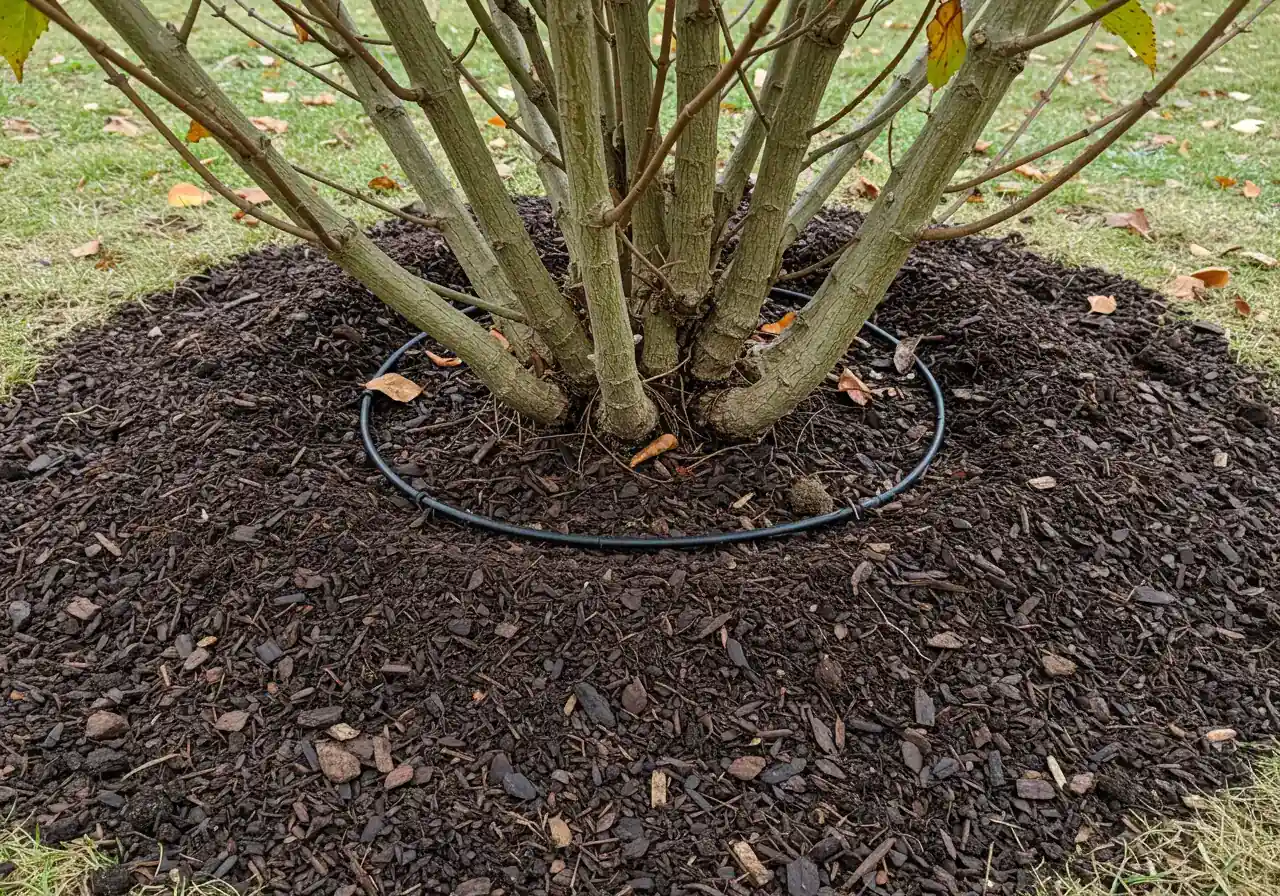
Step 4: Mulch Merrily (Like a Warm Blanket)
Apply 3-4 inches of mulch (shredded bark, leaves) around the base. Pull it back slightly from stems. Good soil preparation helps too!
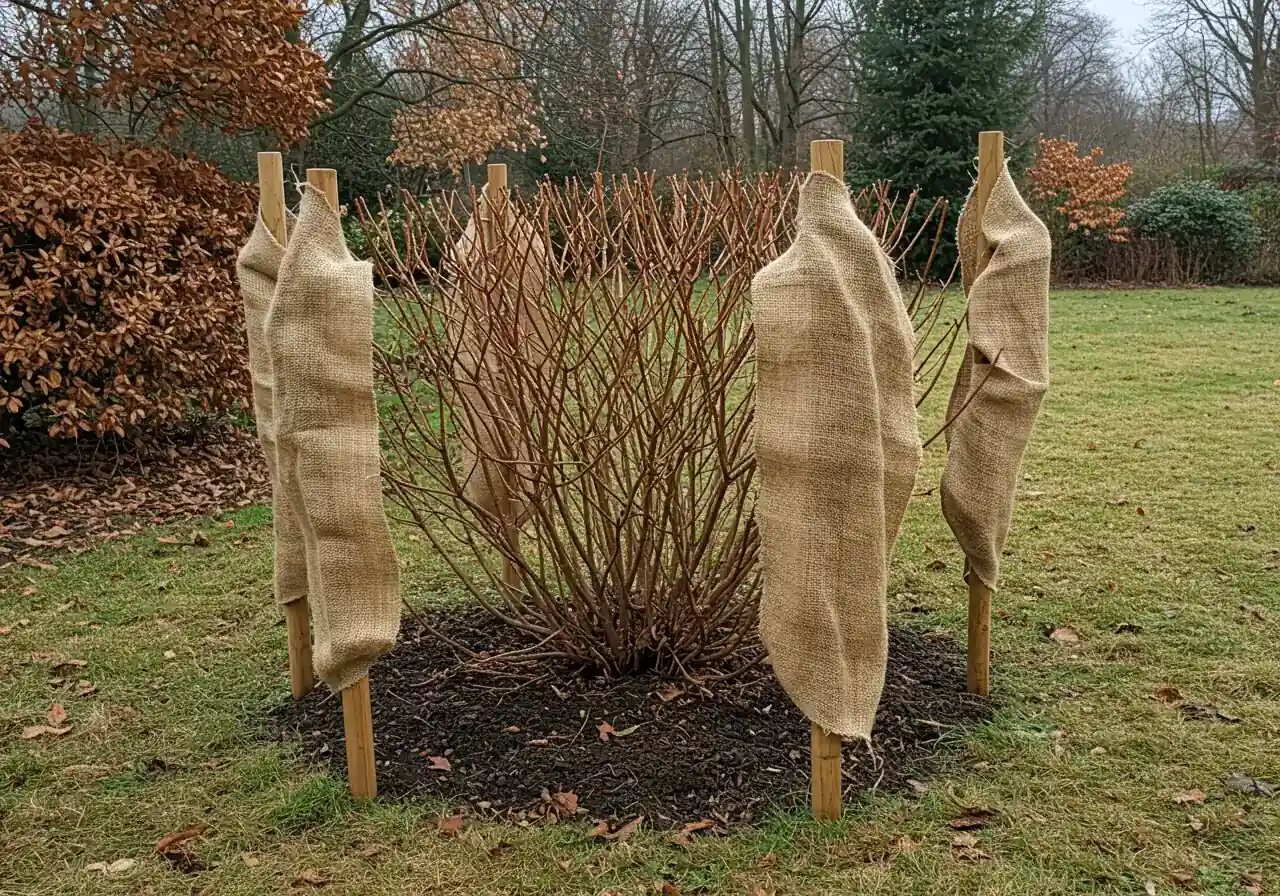
Step 5a: Bundle Up! Burlap Boutique Wrap
Place stakes around the plant. Wrap burlap around stakes (not plant), leaving air. Secure. Optional: fill loosely with leaves later. Perfect for professional garden installation care.
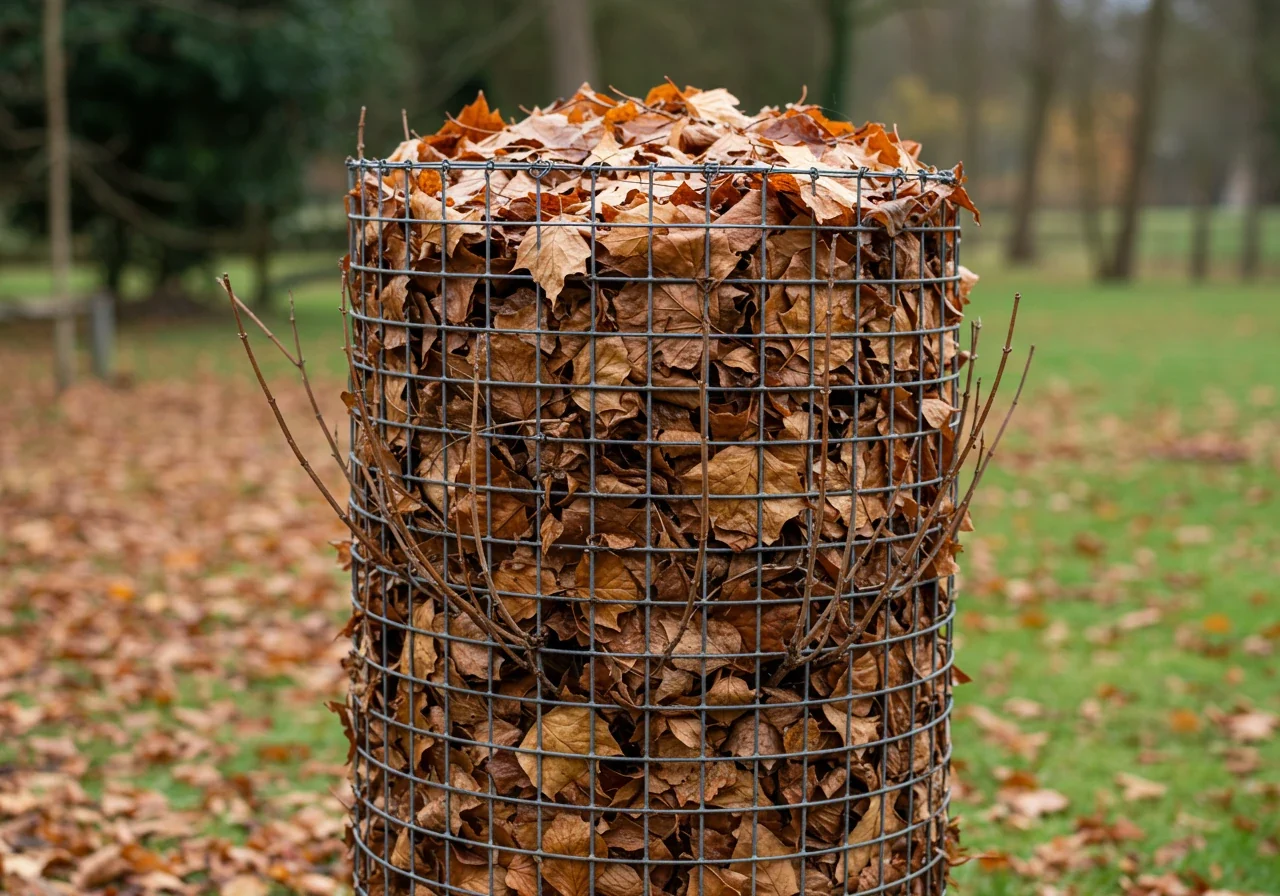
Step 5b: Bundle Up! The Leafy Fortress
Create a wire cage around the plant. Fill completely with dry leaves after ground starts freezing. Mound leaves on top.
Step 6: Patience & The Spring Unveiling
Uncover gradually in spring *after* hard frost risk passes (usually May). Remove leaves/straw first, then wrap/cage later.
Protection Method Quick Compare:
Burlap Boutique Wrap

- Pros: Relatively easy setup, materials easy to find, adjustable height.
- Cons: May look less tidy, burlap might need replacing yearly, potentially less insulating than a full leaf cage in severe cold.
Best for those wanting a quicker setup or who prefer not to collect large amounts of leaves.
Leafy Fortress (Leaf Cage)

- Pros: Excellent insulation, uses free natural materials (leaves), wire cage is reusable.
- Cons: Requires making/buying a cage, needs lots of *dry* leaves, care needed to prevent leaves getting soggy.
Ideal for maximum insulation, especially in very exposed locations, if you have access to plenty of dry leaves.
Following these steps gives your precious hydrangeas the best chance of surviving winter and rewarding you with stunning blooms. It's a key part of fall landscaping preparation, alongside tasks like general tidying and comprehensive lawn care. If tackling winter wrapping feels daunting, remember that professional help is available. Different companies offer various services, so if you're getting quotes, feel free to share your estimate feedback to help refine offerings. For specific needs in different areas, tailored assistance like the Metcalf yard cleanup service or Marionville yard cleanup service can be invaluable. Always ensure you understand the scope of any hired service, usually detailed in their terms and conditions.
We hope this hibernation plan helps your hydrangeas dream sweetly of spring! Happy gardening, and thank you for putting in the effort to protect these beautiful shrubs!
Hydrangea Winter Survival (Bigleaf - Ottawa Estimate)
*Estimated survival rate of flower buds on old wood for Bigleaf Hydrangeas in typical Ottawa winters. Actual results vary.
Beyond Fall Prep: Setting Up Hydrangeas for Success Year-Round
So, you've aced the fall hibernation plan – high five! But getting those hydrangeas to truly thrive in Ottawa involves more than just winter blankets. Think of it as proactive pampering throughout the year. Truly spectacular blooms come from happy, healthy plants, not just ones that *survived* winter.
First things first: set yourself up for success by choosing the right hydrangea for our climate. While the big blue pom-poms (Bigleaf) are tempting, they often require serious winter babying. For less stress and more reliable blooms, look towards Panicle types like 'Limelight' or 'Quick Fire', or Smooth Hydrangeas like 'Annabelle' or 'Incrediball'. These champs bloom on new wood, meaning Ottawa's winter shenanigans are less likely to zap their flower potential. You’ll see these thriving in gardens from Manotick to Nepean for good reason!
Location, location, location! Where you plant matters *a lot*. Most hydrangeas appreciate morning sun and some shade during the hottest part of the afternoon. Shielding them from harsh winter winds can also make a big difference. Now, let's talk soil. Many Ottawa gardeners wrestle with heavy clay soil. Hydrangeas hate having "wet feet," especially in winter. Amending your soil generously with compost *before* planting and top-dressing annually improves drainage and gives roots room to breathe. Good soil structure is fundamental, whether you're planting shrubs or considering expert sod installation for a new lawn. This preparation makes ongoing dedicated garden maintenance much more effective. Consider learning more about our approach to landscaping.
Come spring, *resist* the urge to uncover your protected hydrangeas too early! Wait until the risk of hard frost is truly gone (usually May). Gently remove mulch and protection, then prune any winter-damaged tips. A light feed can give them a boost. Consistent care, including keeping the surrounding area tidy with regular thorough property clean-up, helps prevent pests and diseases. And don't forget local wisdom – Ottawa garden clubs are fantastic resources for tips specific to our area (you might even find tips on the Clean Yards Google Business Profile). If amending large beds or tackling major spring readiness feels overwhelming, remember professional help like an Ottawa property cleanup service or a more general city property cleanup service (covering areas like Marionville) can handle the heavy lifting, supporting your year-round landscape efforts, including foundational regular lawn care practices.
Key Insights: Manotick Hydrangea Protection Cheat Sheet
Alright, let's boil it all down! Think of this as your quick-reference guide to keeping those beautiful Manotick hydrangeas happy through an Ottawa winter. No more hydrangea heartbreak!
- Know Your Type: Bigleaf (blue/pink) blooms need winter help because they flower on *last year's* stems. Panicle ('Limelight') & Smooth ('Annabelle') types are tougher – whew!
- Timing is Key: Protect *after* a few light frosts, but *before* the ground freezes solid (usually late Oct/early Nov).
- Hands Off! (Mostly): *Do not* prune Bigleaf stems in the fall – you'll cut off next year's flowers! Only remove dead wood.
- Water Wisely: Keep watering until the ground freezes. Hydrated plants fare better.
- Mulch Magic: Add a thick layer (3-4 inches) of mulch around the base (leaves or bark work great!) as part of your fall mulching and edging routine.
- Bundle Up: Use burlap wrap (around stakes, not tight on the plant) or create a leaf-filled wire cage for Bigleaf types. Proper material selection matters here.
- Think Long-Term: Healthy plants start with good soil preparation for better drainage.
- Tidy Up: A clean garden bed helps. If overwhelmed, consider a city property cleanup service or specialized help like the Metcalf property cleanup service for larger lots.
Manotick & Ottawa Hydrangea FAQs: Your Winter Worries Answered
You're not alone! The sweet spot is usually late October or early November here in the Ottawa area. Wait until after you've had a couple of light frosts – this helps the plant harden off naturally. The key is to get them wrapped *before* the ground freezes solid, making staking difficult. Trying to wrestle stakes into frozen earth is nobody's idea of fun garden prep!
Ah, the million-dollar question! While 'Endless Summer' varieties *can* bloom on new wood, their *best* show often comes from the buds formed on last year's stems (old wood). Ottawa winters can easily zap those old-wood buds. For reliable, full flowering in our climate, providing winter protection is still your best bet. Consistent care supports those blooms; consider professional help like a reliable city garden maintenance service if needed.
This is classic "hydrangea heartbreak" for Bigleaf types! It usually means the flower buds, which formed on last year's stems, were killed by winter cold, fluctuating temperatures, or drying winds (especially fierce out in places like Greely!). The plant itself survived, putting out leaves, but the flower buds were toast. Proper fall protection helps prevent this bud damage. A good spring clean-up using a local city yard cleanup service can help you assess any stem damage clearly.
It's mostly personal preference! Leaving them on *might* offer a tiny bit of insulation to the buds just below, but it's minimal. Some find they look nice in winter. However, removing them can look tidier and slightly reduce chances of snow load breaking stems or trapping moisture that could lead to issues. If tidiness is your goal, a fall detailed city garden clean up service (available in Marionville too) often includes deadheading.
The burlap wrap method (using stakes around the plant, not wrapping it tightly) is often quicker than building and filling a leaf cage. Improving that heavy clay soil with compost will also make the plant healthier and more resilient overall! If time is tight or the task feels overwhelming, professional help is always an option. Feel free to get in touch with us for advice tailored to your yard – we respect your data, as outlined in our website privacy policy.
Conclusion: Cozy Hydrangeas Mean Happy Summers in Manotick
So there you have it! Tucking your precious hydrangeas in for an Ottawa winter, especially those beautiful Bigleaf varieties, doesn't have to be a head-scratcher. By understanding which type you have, adding a cozy mulch blanket, and giving those sensitive buds some extra protection like a burlap wrap or leaf cage, you're setting the stage for spectacular summer blooms right here in Manotick. Think of it as a little fall landscaping effort now for a whole lot of garden joy later – preventing that dreaded "no-show" flower situation come springtime!
We know fall can be busy, especially with yards in areas like Greely or Osgoode requiring significant leaf management. If wrapping hydrangeas, tackling mountains of leaves, or handling a full fall cleanup feels like one chore too many on your list, remember *Clean Yards* is here to help. Our professional fall cleanup and winter preparation services can take the stress out of getting your garden ready for the cold, ensuring your hydrangeas – and the rest of your landscape – are tucked in safely.
Give your garden the gift of a good winter's rest, and get ready to greet those gorgeous hydrangea blooms next summer! Happy fall gardening!

